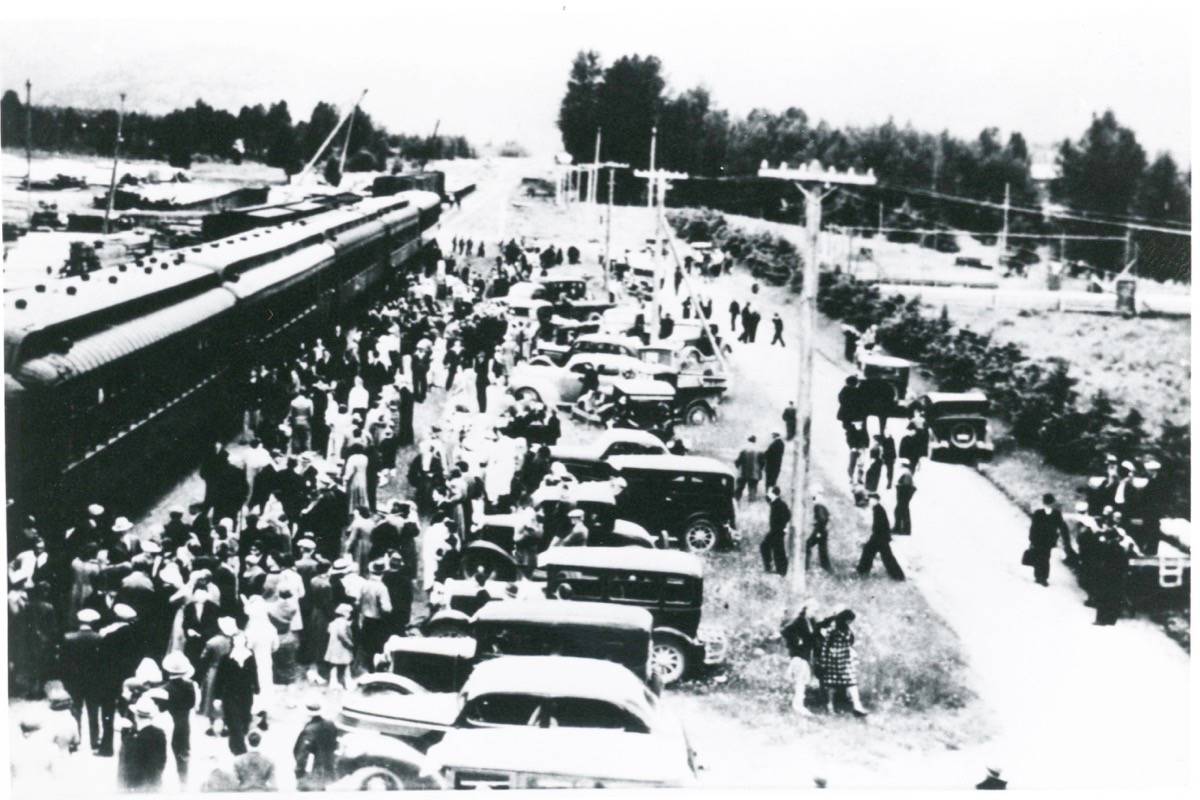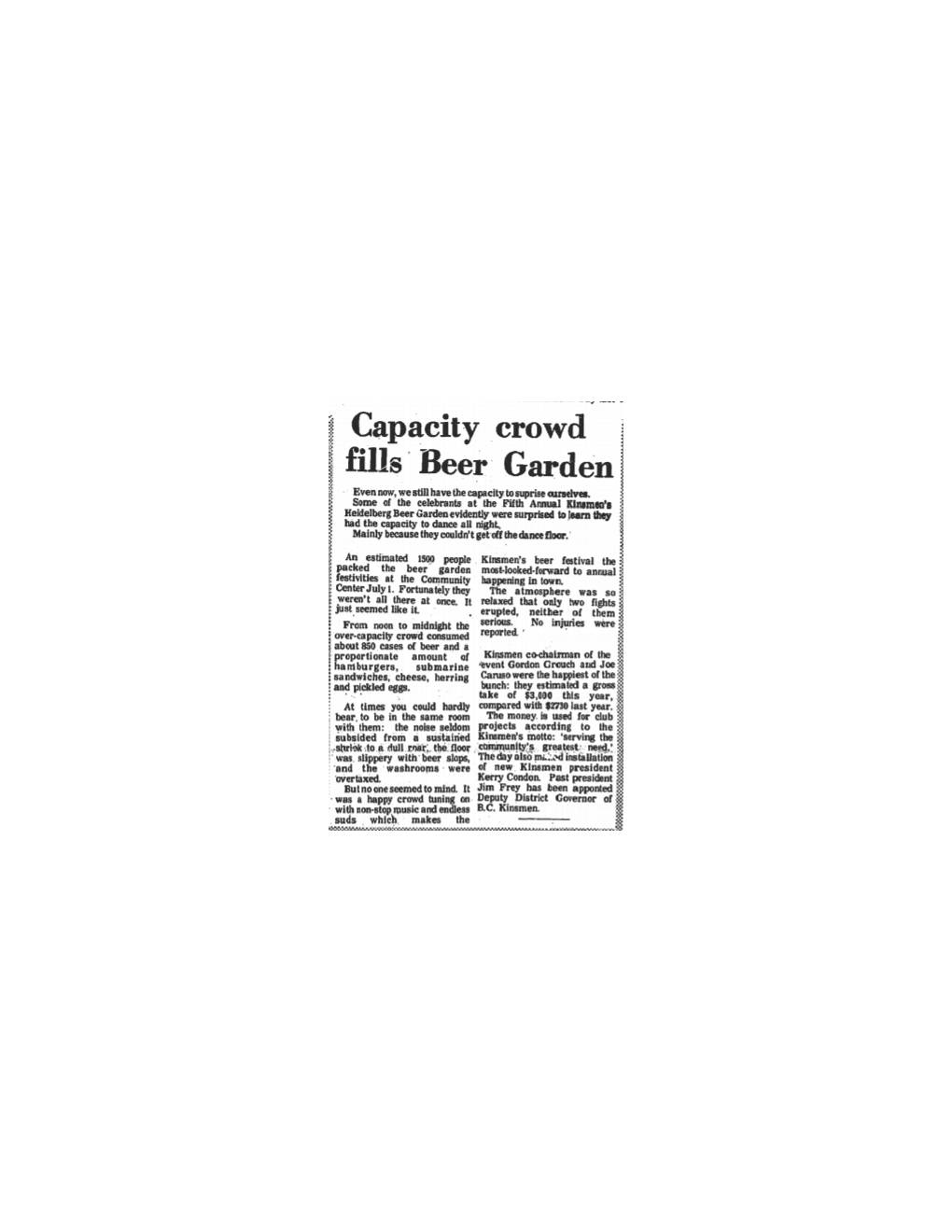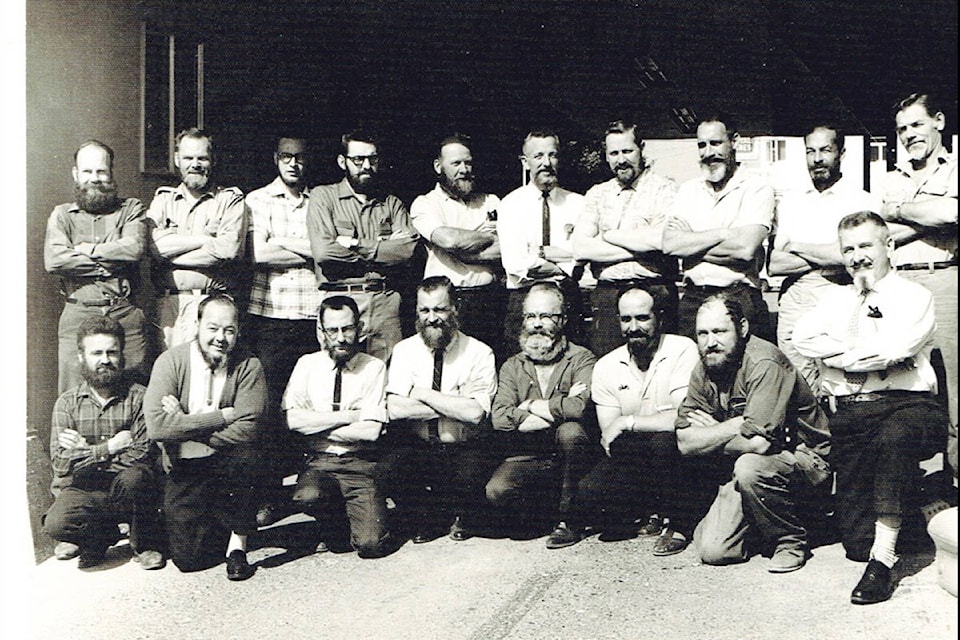By Madeleine Link
WHO do we think we are? July 1 provides an opportunity for residents of Canada to articulate their own conceptions of what it means to be Canadian. These conceptions have changed over the years as the community of Terrace has celebrated “Dominion Day,” now called “Canada Day,” in many forms.
In the 1920s, local celebrations consisted of a parade, sporting events, a picnic and a dance. Terrace old-timer Mary Little recalls how Terrace “might have several hundred Rupert people” come visit by train each year, and Emil Haugland (Terrace’s first chairman, before the community had an official mayor) says the Terrace band “used anything; washtubs as drums” to greet the visitors.
The parade was followed by afternoon sporting events, often pitting the neighbouring Usk against the Terrace team. After the sports came a picnic and then a dance at the Great War Veterans Association hall (today the former Urban Colour location), soundtracked by local orchestras or simply a harmonica. In 1926 there was even a circus, including a “painless dentist” and a fire-eater.
These early celebrations were often organized, exclusively or in part, by the Terrace Assembly of the Native Sons of Canada. This fraternal organization was founded in British Columbia and operated nationally, with the primary goal of promoting their view of “Canadian culture.” This included advocating for a new uniquely Canadian flag as well as organizing social events for the organization’s members.
Mostly white-collar male workers, the Native Sons focussed on the legacy of their pioneer forefathers. They often expressed anti-immigration views, worrying that foreign influence (especially from Asia) would damage Canadian identity.
As a result of this, their view of Canadian identity excluded immigrants like Sikh and Japanese Canadians. Interestingly, the Native Sons acknowledged First Nations as Canada’s original inhabitants, although they wanted First Nations groups to adopt British-Canadian customs.
In 1967, Dominion Day celebrations focussed on the centenary of Confederation. Events again included a parade, as well as fireworks and a beer garden. The festivities also included two competitions that expressed somewhat rigid gender roles: a “bathing beauty” contest (won by Anita Carlson from the Catholic Women’s League) and a beard-growing contest (won by Chris Gagnon).
The 1967 celebrations also saw the dedication of the Centennial Building (now the Terrace Public Library), which housed both a museum and library.
Librarian Mein van Heek later told the Terrace Herald that after the library moved to its new location, it received nearly double the usual amount of patrons.
The lower level of the Centennial Building, initially used as a museum, is now the Terrace Art Gallery, and Terrace now lacks a museum. Heritage Park, founded by volunteers in the early 1980s and run as a nonprofit, serves as a heritage site.
Also started in 1967 was the Kinsmen’s Heidelberg Beer Garden, which was described as “the most-looked-forward to annual happening in town” by the local newspaper.
The Terrace Herald describes how in 1971, when the event was filled to capacity, “the noise seldom subsided from a sustained shriek to a dull roar, the floor was slippery with beer slops, and the washrooms were overtaxed.”
Despite these conditions, all 1500 visitors very much enjoyed themselves and the Kinsmen saw an estimated $3000 profit.
Today’s July 1 celebrations are once again different.
The parade, traditionally held in Terrace, has now moved to Kitimat and is one of that city’s largest annual events drawing people from around the region.
Terrace now has a pancake breakfast, hosted by local firefighters. Proceeds are donated to the BC Professional Firefighters Burn Fund.
The breakfast also features booths on fire safety and the opportunity to ride in a fire truck. Music is provided by the Terrace Community Band, now in its 34th year.
Celebrations are also held at Heritage Park, with activities and entertainment for residents of all ages.
The event features games for children as well as multicultural music and food for the whole family.
Local artists take up residence in the heritage log cabins to talk to visitors and display their work.
Heritage Park’s celebrations prominently feature First Nations culture such as dancing, food and art, with the goal of encouraging citizens to recognize that indigenous people have been living in the area for thousands of years — long before Confederation.
Madeleine Link is Heritage Park’s collections researcher for the summer and a third-year Bachelor of Arts student at the University of British Columbia.


